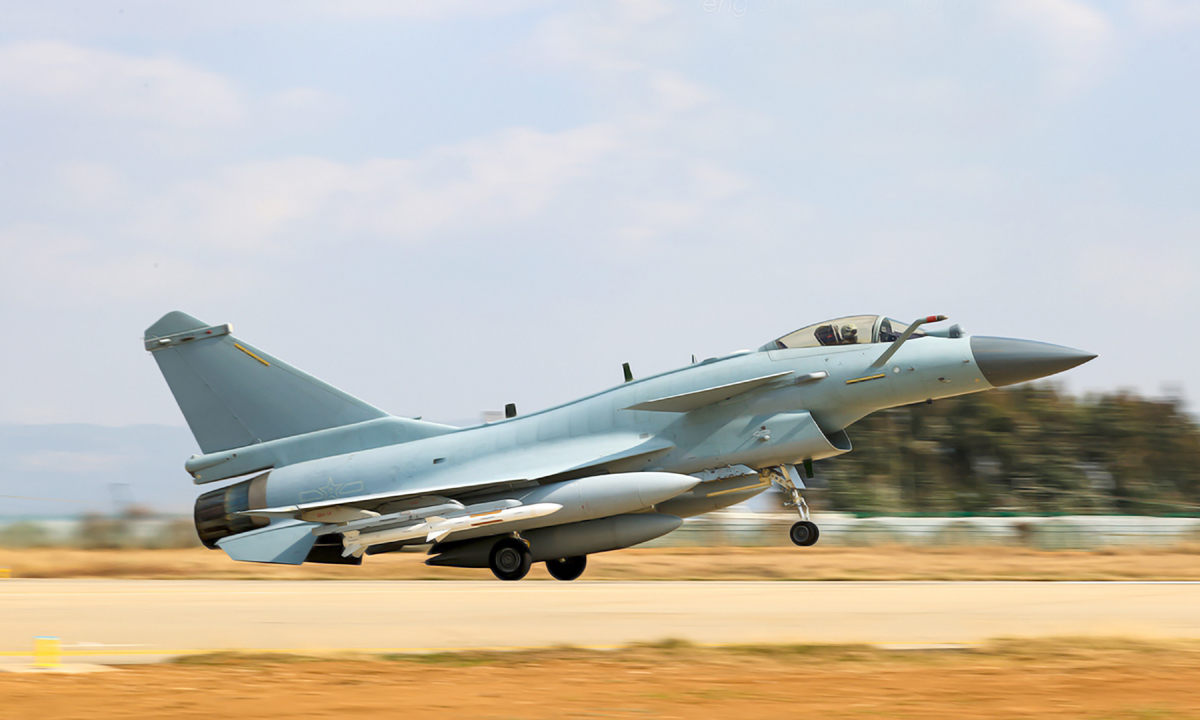MIRZA KASHIF BAIG
Pakistan’s acquisition of the Chengdu J-10C fighter jet represents a significant development in the country’s efforts to bolster its air force capabilities. This article explores the various benefits that the J-10C brings to Pakistan, ranging from enhancing its air combat capabilities to strengthening its defense posture in the region.
1. ENHANCED AIR COMBAT CAPABILITIES
The Chengdu J-10C is a modern, fourth-generation multirole fighter aircraft equipped with advanced avionics and weaponry. By incorporating this cutting-edge platform into its air force, Pakistan significantly enhances its air combat capabilities. The J-10C’s agility, speed, and advanced radar systems make it a formidable asset in both air-to-air and air-to-ground combat scenarios. Pakistan’s air force can now better protect its airspace and respond effectively to potential threats.
2. TECHNOLOGICAL ADVANCEMENTS
The J-10C’s avionics suite includes an AESA (Active Electronically Scanned Array) radar, providing Pakistan with improved situational awareness and target tracking capabilities. This advanced radar technology allows for better detection and tracking of enemy aircraft, even in challenging electronic warfare environments. Additionally, the J-10C’s glass cockpit and modern flight control systems empower Pakistani pilots with state-of-the-art tools, enhancing their operational effectiveness.
3. MULTIROLE CAPABILITIES
One of the key advantages of the J-10C is its versatility as a multirole fighter. Pakistan can employ this aircraft in various mission profiles, such as air-to-air combat, air-to-ground strikes, and electronic warfare operations. This flexibility is vital in modern warfare, where military forces must adapt to dynamic and diverse threats. The J-10C’s ability to switch between roles ensures Pakistan’s air force is prepared for a wide range of contingencies.
4. AIR SUPERIORITY AND REGIONAL BALANCE
Pakistan’s acquisition of the J-10C enhances its air superiority in the region, particularly in the context of its longstanding rivalry with India. The J-10C’s advanced capabilities level the playing field and act as a deterrent to potential adversaries. This contributes to regional stability by promoting a balance of power and reducing the likelihood of conflict escalation.
5. EXPORT POTENTIAL
Pakistan’s decision to acquire the J-10C also has implications for its defense industry and potential exports. As Pakistan gains experience with the J-10C, it may consider exporting the aircraft to other countries, thereby strengthening its position in the international arms market. This export potential could bolster Pakistan’s economy and forge new defense partnerships with other nations.
6. INDIGENOUS DEFENSE INDUSTRY GROWTH
The acquisition of advanced platforms like the J-10C can boost Pakistan’s indigenous defense industry. By working closely with China to integrate and maintain the J-10C, Pakistan’s defense sector gains valuable experience and expertise in aircraft maintenance, technology transfer, and defense production. Over time, this collaboration can lead to the development of domestic capabilities, reducing dependence on foreign suppliers and fostering self-reliance.
7. INTEGRATION WITH EXISTING FLEET
Pakistan already operates various fighter aircraft, including the JF-17 Thunder and F-16 Fighting Falcon. The J-10C’s compatibility with existing aircraft and systems streamlines the integration process, enabling Pakistani pilots to transition smoothly to the new platform. This facilitates operational readiness and minimizes training and logistical challenges.
8. MODERNIZATION OF THE AIR FORCE
The introduction of the J-10C into Pakistan’s air force is part of the country’s broader efforts to modernize its military. This modernization includes upgrading equipment, improving training, and enhancing overall readiness. A more capable air force contributes to Pakistan’s national security and defense capabilities, ensuring it can respond effectively to emerging threats.
CHALLENGES AND CONSIDERATIONS
While the acquisition of the J-10C offers numerous benefits, it also presents challenges and considerations for Pakistan. These include the need for ongoing maintenance and support, potential geopolitical implications, and financial costs. It is crucial for Pakistan to carefully manage these factors to maximize the benefits of its investment in the J-10C.
CONCLUSION
Pakistan’s acquisition of the Chengdu J-10C fighter jet represents a significant step forward in enhancing its air combat capabilities and regional defense posture. The advanced technology, multirole capabilities, and export potential of the J-10C offer Pakistan numerous strategic advantages. As Pakistan continues to integrate and operate the J-10C, it positions itself as a formidable force in the region while contributing to its broader defense and security objectives. The J-10C acquisition underscores Pakistan’s commitment to maintaining a strong and capable air force in the face of evolving security challenges.


